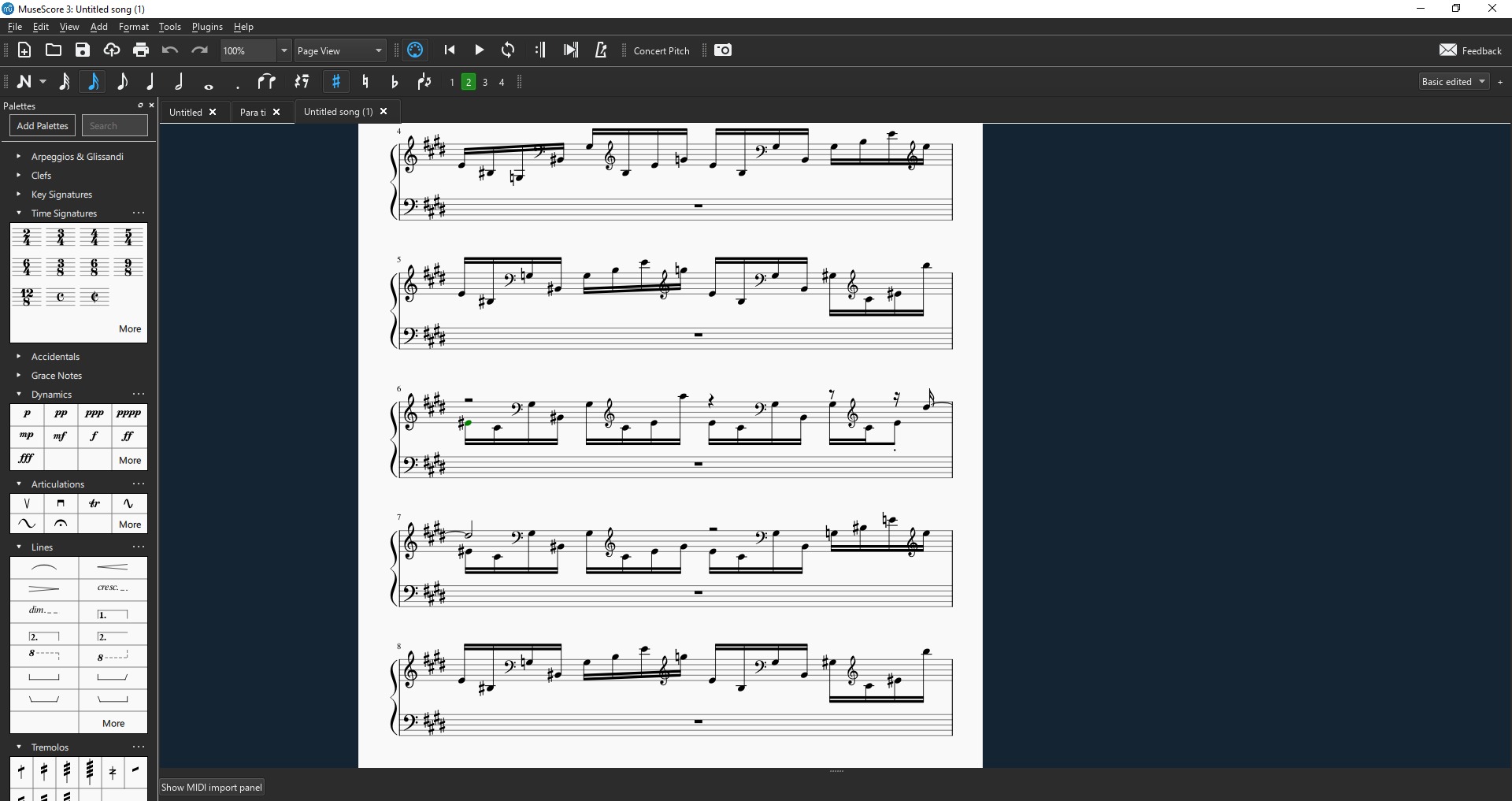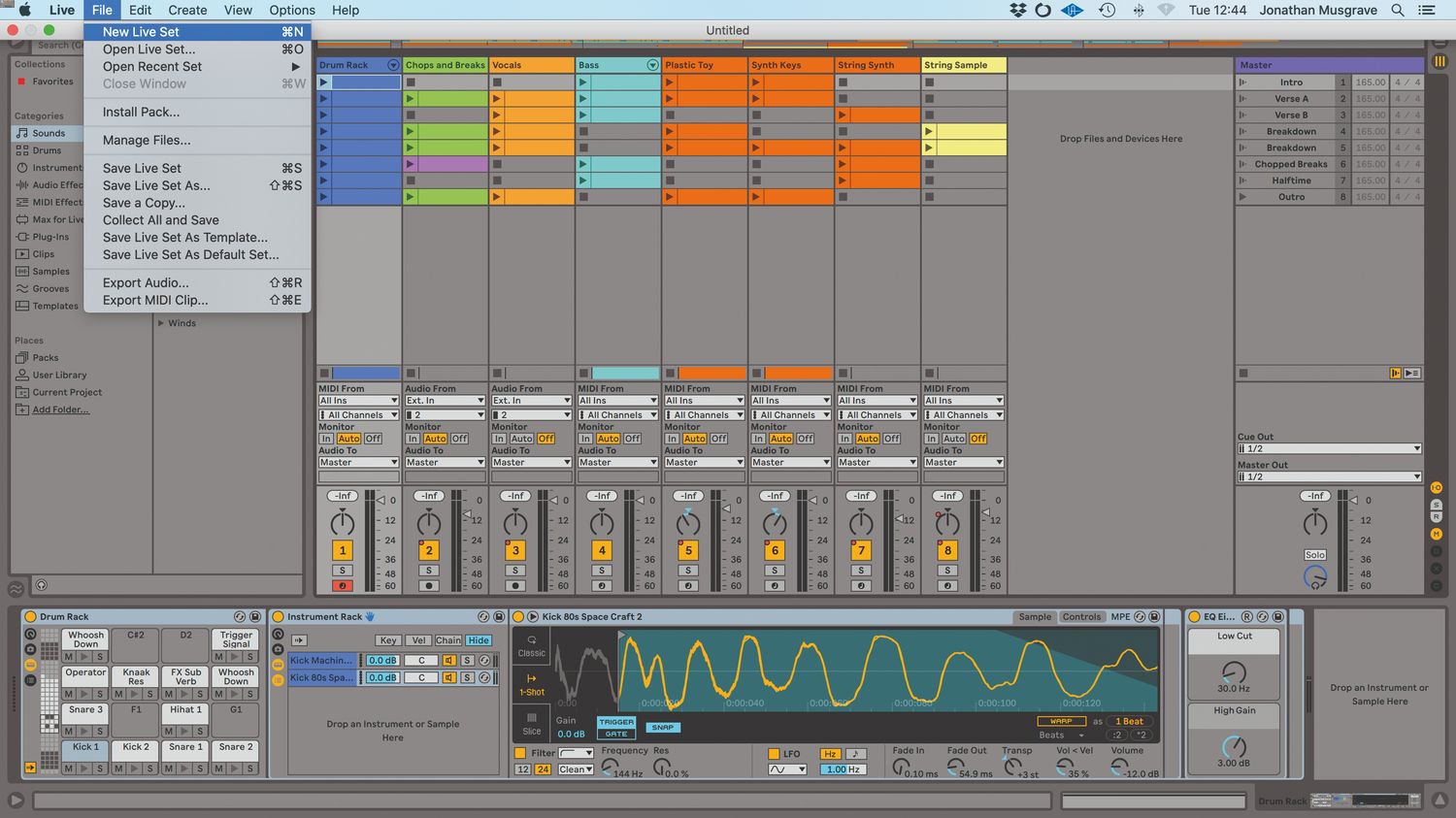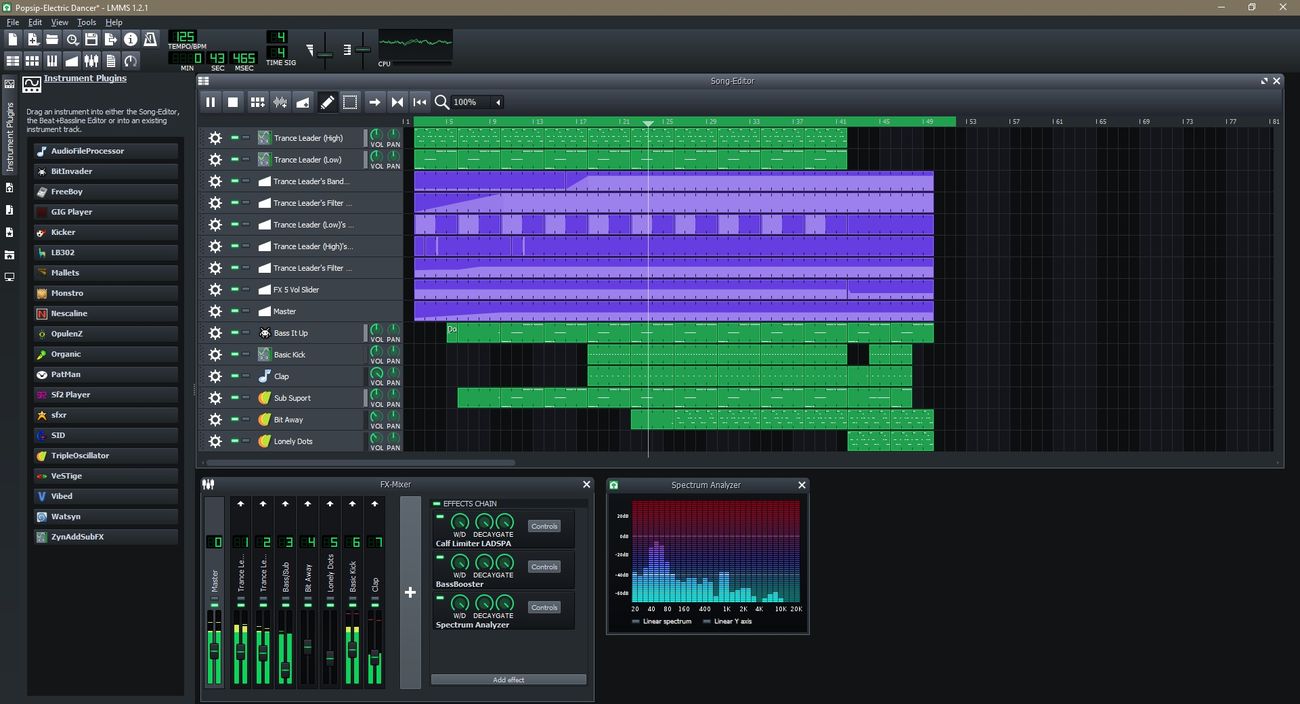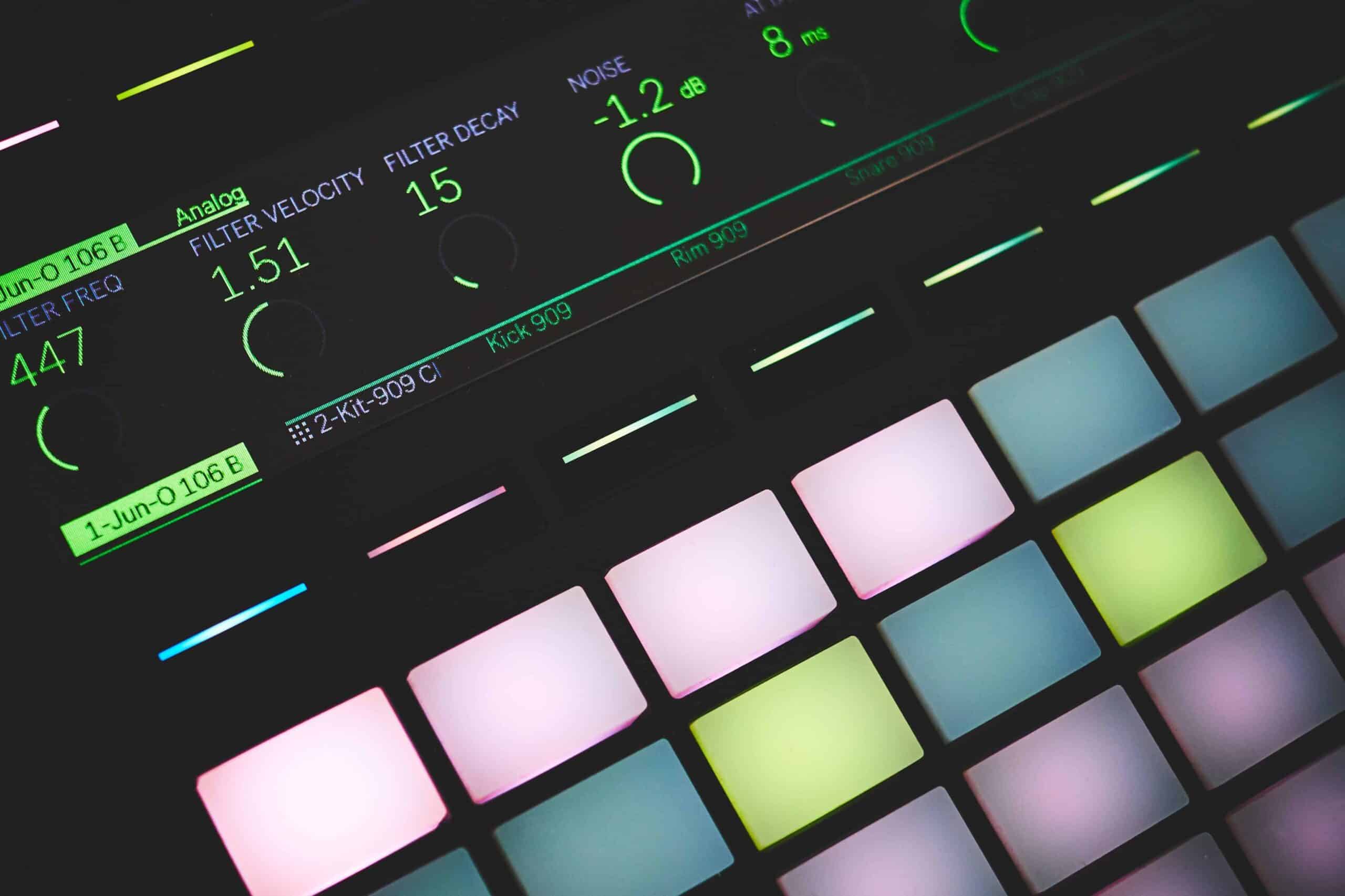Home>Production & Technology>MIDI>How To Import MIDI Into Ableton


MIDI
How To Import MIDI Into Ableton
Modified: February 22, 2024
Learn how to import MIDI into Ableton and enhance your music production. Follow our step-by-step guide for seamless MIDI integration.
(Many of the links in this article redirect to a specific reviewed product. Your purchase of these products through affiliate links helps to generate commission for AudioLover.com, at no extra cost. Learn more)
Table of Contents
Introduction
Importing MIDI files into Ableton opens up a world of creative possibilities for music producers and enthusiasts. Whether you're looking to incorporate intricate melodies, complex rhythms, or dynamic arrangements into your projects, MIDI files serve as a versatile tool for enhancing your music production process. In this comprehensive guide, we will explore the step-by-step process of importing MIDI files into Ableton Live, a popular digital audio workstation (DAW) known for its intuitive interface and powerful features.
By harnessing the capabilities of MIDI, you can seamlessly integrate pre-existing musical elements into your compositions, allowing for seamless experimentation and customization. MIDI files, which contain musical data such as note values, velocity, and timing information, serve as a bridge between different music software and hardware, enabling you to transfer musical ideas across various platforms with ease.
As we delve into the intricacies of importing MIDI files into Ableton, you'll gain valuable insights into the seamless integration of external MIDI content, thereby expanding your creative horizons and streamlining your workflow. Whether you're a seasoned producer seeking to incorporate intricate MIDI patterns or a budding musician eager to explore new sonic landscapes, this guide will equip you with the knowledge and skills to harness the full potential of MIDI within the Ableton environment.
Join us on this enlightening journey as we unravel the art of importing MIDI files into Ableton Live, empowering you to infuse your musical projects with boundless creativity and innovation. Let's embark on this transformative exploration of MIDI integration, where the convergence of technology and artistry paves the way for endless musical expression and ingenuity.
Step 1: Preparing the MIDI File
Before diving into the process of importing a MIDI file into Ableton, it's crucial to ensure that the MIDI file is properly prepared to seamlessly integrate with your project. This preparatory phase involves several key considerations to optimize the MIDI file for efficient utilization within Ableton Live.
1. Selecting the Appropriate MIDI File
The first step in preparing a MIDI file for import into Ableton involves selecting a suitable MIDI file that aligns with your creative vision. Whether you're sourcing MIDI files from online repositories, creating them using a MIDI-enabled instrument, or receiving them from collaborators, it's essential to choose MIDI files that resonate with the stylistic direction of your project. Consider factors such as musical complexity, instrumentation, and overall compatibility with your composition to ensure a seamless integration process.
2. Organizing MIDI Tracks and Channels
Once you've identified the MIDI file that complements your project, it's beneficial to organize the MIDI tracks and channels within the file. This entails categorizing individual musical elements, such as melodies, basslines, chord progressions, and percussive patterns, into distinct tracks and channels. By structuring the MIDI data in a coherent manner, you can streamline the subsequent editing and manipulation processes within Ableton Live, facilitating a more intuitive and efficient workflow.
3. Tempo and Time Signature Alignment
Aligning the tempo and time signature of the MIDI file with your Ableton project's settings is pivotal for maintaining rhythmic consistency and synchronization. Before importing the MIDI file, verify that its tempo and time signature correspond to those of your Ableton session. This ensures that the imported MIDI data seamlessly integrates with the existing project tempo, enabling harmonious playback and synchronization with other musical elements.
4. Cleaning and Refining MIDI Data
In some instances, MIDI files may contain extraneous or redundant musical data that can impede the seamless integration of the file into Ableton. Prior to importing the MIDI file, it's beneficial to review and refine the MIDI data, eliminating any unnecessary elements, adjusting note velocities, and ensuring precise timing accuracy. This meticulous approach to cleaning the MIDI data optimizes its compatibility with Ableton Live, setting the stage for effortless incorporation into your musical arrangements.
By meticulously preparing the MIDI file through these essential steps, you pave the way for a smooth and efficient integration process within Ableton Live, laying the groundwork for creative exploration and artistic innovation.
Step 2: Importing the MIDI File into Ableton
Upon completing the preparatory phase, the next pivotal step in the seamless integration of MIDI files into your Ableton Live project involves the actual process of importing the MIDI data. Ableton Live offers a user-friendly interface and intuitive functionalities that streamline the importation of MIDI files, empowering you to effortlessly incorporate diverse musical elements into your compositions.
1. Navigating to the Browser
To initiate the importation process, navigate to the Browser panel within Ableton Live. This centralized hub serves as the gateway to accessing and managing various types of content, including MIDI files, audio samples, effects, and instruments. By leveraging the Browser's search and categorization features, you can efficiently locate the MIDI file you intend to import, ensuring a seamless and expedient workflow.
2. Drag and Drop Functionality
Ableton Live simplifies the importation of MIDI files through its intuitive drag and drop functionality. Once you've located the desired MIDI file within the Browser, simply drag the file from the Browser panel and drop it directly onto the Arrangement View or Session View within Ableton Live. This straightforward approach eliminates unnecessary complexities, enabling you to swiftly introduce the MIDI data into your project environment with minimal effort.
3. MIDI Track Creation
Upon dropping the MIDI file into the Arrangement View or Session View, Ableton Live automatically generates MIDI tracks corresponding to the imported MIDI data. This seamless integration expedites the setup process, allowing you to focus on creative exploration and musical refinement without the burden of manual track creation. The newly generated MIDI tracks serve as the canvas for further customization and manipulation, providing a versatile platform for shaping the imported musical elements to align with your artistic vision.
4. Mapping MIDI Data
As the MIDI file is imported into Ableton Live, you have the flexibility to map the MIDI data to different instruments, virtual instruments, or MIDI-compatible hardware devices within your project. This dynamic mapping capability empowers you to experiment with diverse sonic textures and timbres, fostering a fluid and adaptive approach to musical expression. By seamlessly integrating the imported MIDI data with an array of instruments and sound generators, you unlock a myriad of creative possibilities, enriching your compositions with depth and diversity.
5. Playback and Exploration
Once the MIDI file is successfully imported and mapped within Ableton Live, you can immediately engage in playback and exploration, immersing yourself in the intricacies of the imported musical content. By leveraging Ableton Live's real-time playback capabilities and comprehensive editing tools, you can delve into the nuances of the MIDI data, experiment with arrangement variations, and sculpt the imported musical elements to harmonize with your project's overarching aesthetic.
By mastering the art of importing MIDI files into Ableton Live, you transcend traditional boundaries, infusing your musical endeavors with a rich tapestry of diverse MIDI content. This seamless integration process empowers you to harness the boundless potential of MIDI, amplifying your creative prowess and propelling your musical projects to new heights of innovation and artistry.
Step 3: Editing and Manipulating the MIDI Data
Once the MIDI file is successfully imported into Ableton Live, the stage is set for a transformative journey of creative exploration and musical refinement. The inherent flexibility and adaptability of MIDI data within Ableton Live empower you to delve into the intricacies of the imported musical elements, enabling seamless editing, manipulation, and customization to align with your artistic vision.
1. MIDI Note Manipulation
Ableton Live offers a comprehensive suite of MIDI editing tools that facilitate precise manipulation of individual notes within the imported MIDI data. From adjusting note lengths and positions to modifying note velocities and articulations, you have the freedom to sculpt the musical phrases with unparalleled precision. This granular control over MIDI note attributes empowers you to infuse nuanced expressions and dynamic variations, breathing life into the imported musical content.
2. MIDI Quantization and Groove Application
Harnessing the power of MIDI quantization, you can refine the rhythmic accuracy of the imported MIDI data, aligning it with your project's desired groove and timing. Additionally, Ableton Live's extensive groove pool empowers you to infuse the MIDI data with diverse rhythmic feels and nuances, enriching the musical cadence with organic, humanized rhythms. By seamlessly integrating quantization and groove application, you elevate the imported MIDI content to resonate with your project's unique sonic identity.
3. MIDI Effects Integration
Ableton Live's robust array of MIDI effects opens doors to boundless sonic experimentation and innovation. From arpeggiators and chord generators to pitch modulation and velocity manipulation, these MIDI effects serve as catalysts for transformative sonic exploration, enabling you to reshape the imported MIDI data with imaginative flair. By seamlessly integrating MIDI effects into the editing process, you expand the creative palette, infusing the MIDI content with captivating textures and evocative timbres.
4. Automation and Parameter Control
The integration of automation and parameter control within Ableton Live empowers you to dynamically modulate various aspects of the imported MIDI data in real time. Whether it's altering filter cutoff frequencies, manipulating envelope parameters, or modulating MIDI effect parameters, the seamless application of automation and parameter control breathes dynamic life into the MIDI content, fostering evolving sonic landscapes and emotive musical narratives.
5. Layering and Harmonization
By leveraging Ableton Live's intuitive multi-track environment, you can seamlessly layer the imported MIDI data with additional musical elements, harmonizing diverse MIDI patterns and textures to craft rich, multi-dimensional arrangements. This approach fosters a synergistic amalgamation of musical elements, allowing for the creation of lush harmonies, intricate counterpoints, and immersive sonic tapestries that transcend conventional boundaries.
In essence, the process of editing and manipulating MIDI data within Ableton Live transcends conventional paradigms, offering a boundless realm of creative possibilities and artistic expression. By seamlessly integrating the imported MIDI content with Ableton Live's versatile editing and manipulation tools, you embark on a transformative odyssey of musical refinement, innovation, and boundless creativity.
Conclusion
In conclusion, the process of importing MIDI files into Ableton Live represents a gateway to a realm of boundless creativity and innovation for music producers and enthusiasts. As we've traversed through the intricacies of preparing, importing, and manipulating MIDI data within the Ableton environment, a profound understanding of the transformative potential of MIDI integration has emerged.
By meticulously preparing MIDI files through the selection of appropriate content, organization of tracks and channels, alignment of tempo and time signature, and refinement of MIDI data, producers lay a solid foundation for seamless integration into their projects. This preparatory phase sets the stage for a streamlined and efficient workflow, allowing for uninhibited creative exploration and musical refinement.
The intuitive importation process within Ableton Live, characterized by the seamless drag-and-drop functionality, automatic MIDI track generation, and dynamic mapping capabilities, fosters a fluid and expedient integration of MIDI content. This user-friendly approach empowers producers to effortlessly introduce diverse musical elements into their projects, unlocking a myriad of creative possibilities and sonic textures.
Furthermore, the comprehensive editing and manipulation tools within Ableton Live provide a fertile ground for artistic expression and musical refinement. From granular note manipulation and rhythmic quantization to the integration of MIDI effects, automation, and layering techniques, producers embark on a transformative odyssey of sonic exploration. This journey transcends conventional paradigms, paving the way for the creation of evocative musical narratives and immersive sonic landscapes.
In essence, the convergence of MIDI and Ableton Live transcends the realm of mere technical integration, giving rise to a symbiotic relationship between technology and artistry. Through this harmonious fusion, producers are empowered to infuse their musical endeavors with a rich tapestry of diverse MIDI content, amplifying their creative prowess and propelling their projects to new heights of innovation and ingenuity.
As we bid adieu to this enlightening exploration of MIDI integration within Ableton Live, the transformative impact of this symbiotic relationship lingers as an enduring testament to the unbounded potential of technology in the service of artistic expression. May this newfound understanding embolden producers to embark on a continual quest for sonic innovation and creative evolution, where the seamless integration of MIDI becomes a catalyst for boundless musical expression and ingenuity.











